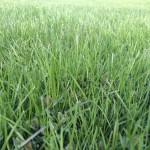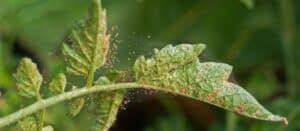Driving around the area, it’s always nice to see (and smell) all the freshly mowed lawns. But not every lawn is properly mowed, leaving it vulnerable to pests, disease, drought, weeds, and more.
Thankfully, there are some easy things you can do to help your lawn look great this season that won’t cost you a dime!
Below are 5 simple mowing practices for a lush, green lawn this summer.
#1 – Mow at the proper height
Cutting your lawn at the proper height is a simple enough practice with huge benefits.
A simple rule of thumb to remember:
Weeds like to grow when you cut it low. Mow it long to help grass and roots grow strong.
So, what is the best height to mow your grass? 3½-4” is the proper height to encourage a larger and deeper root system to grow. This will help your turf be more effective in crowding out competition from weeds, as well as being better able to withstand drought periods.
#2 – Use sharp mower blades
Dull blades shred and wound the grass, making it more vulnerable to pests and diseases.
To keep mower blades sharp, have a spare blade on hand so you can quickly replace it if needed. You can also sharpen the blade yourself (it’s easier than you may think). Here’s a helpful video on how to sharpen lawnmower blades.

Cut grass higher to improve drought resistance and help outcompete weeds.
#3 – Cut no more than 1/3 of the grass blade at a time
Removing more than that stresses the grass, which, again, makes it more vulnerable to pest and disease problems.
So, for example, if your turf is 5” tall, cut no more than 1 to 1½” to get it to 3½ to 4” high.
#4 – Use 3 or 4 different angles to mow your lawn
To reduce and spread out the wear and tear from mower wheels, mix up your mowing pattern each time you mow the lawn. Not only will your lawn thank you, you’ll also get to see it from different angles so you can more easily spot any potential issues before they become a problem.

Short grass has a shallower root system and is more vulnerable to “scalping”.
#5 – Leave grass clippings in place after mowing
Grass clippings decay and release nutrients back to the soil over the course of the growing season. Contrary to popular belief, leaving grass clippings on your lawn does not lead to the buildup of thatch.
Over the course of a growing season, the amount of nitrogen released into the soil from grass clippings equals the amount in one fertilizer application! By building soil organic matter and nitrogen-fixing bacteria (creating healthy biology in an organic lawn), you’ll be able to use less fertilizer. All you need to do is skip bagging and/or raking those grass clippings after mowing.
What’s next? Organic Fertilization – Start with a Quality Soil Test (Do you remember when you last had a quality soil test done on your lawn?)
GET THE LATEST NEWS
Subscribe to the Organic Plant Care Newsletter and get timely and helpful tips and updates monthly.
There's no spam - we promise!







